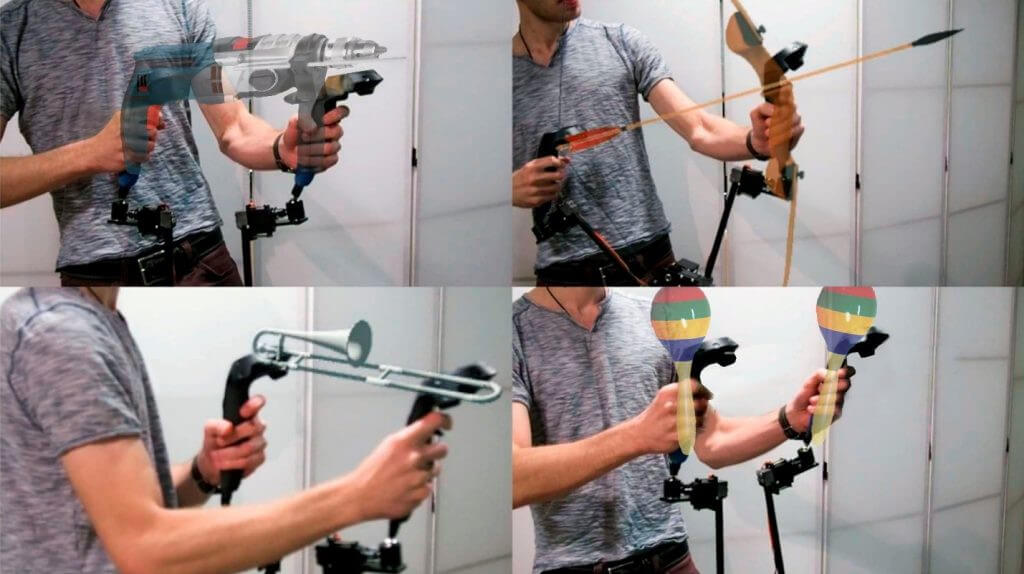Virtual reality might not be the revolutionary new entertainment medium many had hoped it would be but that hasn't stopped major players in the industry from innovating.
Indeed, Valve has been working on an intriguing new pair of motion controllers that include built-in finger tracking and it now seems that Microsoft has been toying with a few similar projects. In the software giant's latest Research Blog post, they announced three unique new prototype motion controllers for VR.
The first of these new controllers is "The Claw," a device that uses haptic feedback to let users feel the shape and texture of virtual objects in the real world. For example, if you pick up a cube by one of its edges, The Claw should prevent your fingers from forming anything tighter than a 90-degree angle.
In addition to simply forcing your fingers to conform to the shape of a given virtual object, the claw can also simulate things like gun recoil or an object's texture by using various vibration effects.
Microsoft's second prototype VR controller was built with accessibility in mind. Dubbed the "Canetroller," the device aims to allow blind and visually-impaired individuals to interact with virtual reality content. The Canetroller uses a standard HTC Vive tracker to track movement but also comes equipped with a braking system that can stop your virtual cane from clipping with a virtual object.
Once a virtual cane collides with a virtual object, the Canetroller uses a "voice coil" to cause vibrations, effectively allowing the device to simulate the feeling of bumping a real cane against a real object. In addition to simply providing some extra "oomph" when a user strikes an object, the voice coil can also "simulate the texture of the ground" if the user drags their virtual cane across it. The Canetroller can also use 3D spatial audio to simulate the sound an object might make when struck with a cane.
The final controller Microsoft revealed is technically three devices that all serve a similar purpose, collectively known as the "Haptic Links." In Microsoft's own words, the Haptic Links "dynamically alter the forces perceived between the user's hands to support rendering of a variety of two-handed objects and interactions." Put simply, each Links device will lock two Vive controllers into place to simulate the real-world handling of, say, a shotgun or a box.
The Links can even simulate the feeling of drawing back the string of a bow - as you pull back the virtual string, the Links will cause the corresponding controller to become increasingly rigid until the string is released.
While it may be a while before any of these devices hit the market, it's certainly interesting to see what the future of virtual reality could hold.
